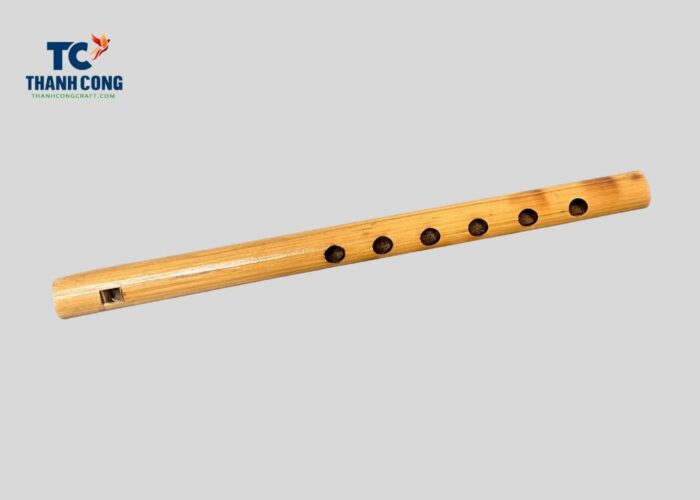-
12-18-2023, 03:44 PM #1
 Silver member
Silver member
- Ngày tham gia
- Jul 2023
- Bài viết
- 83
How to Craft Your Own Bamboo Flute: A Step-by-Step Guide
How do you make a bamboo flute?
How do you make a bamboo flute? Making a bamboo flute can be a rewarding and creative project. Here's a basic guide on how to make a simple bamboo flute. Keep in mind that this is a simplified version, and the process may vary based on your design preferences and the type of bamboo you have.

Materials:- Bamboo: Choose a piece of bamboo that is straight and without cracks. The diameter and length will affect the pitch and tone of your flute.
- Cutting tools: Hacksaw or fine-toothed saw, small files, sandpaper.
- Drill with bits: For making holes in the bamboo.
- Measuring tools: Ruler, tape measure, pencil.
- Flame source: Lighter or torch for cleaning the interior.
Steps:- Select and Harvest Bamboo:
- Choose a healthy bamboo stalk that is dry and free from cracks or insect damage.
- Cut the bamboo stalk to your desired length, considering the key you want for your flute.
- Cut the Bamboo:
- Cut the bamboo to the desired length using a hacksaw or fine-toothed saw.
- Make a straight cut on one end of the bamboo and an angled cut on the other end.
- Mark the Holes:
- Use a pencil and ruler to mark the positions of the finger holes on the bamboo. The hole placement will determine the notes the flute can produce.
- Typically, six finger holes are marked, but you can adjust based on your design.
- Drill the Holes:
- Use a drill to make holes at the marked positions.
- Start with a small drill bit and gradually increase the size until you achieve the desired hole diameter.
- Shape and Smooth:
- Use small files and sandpaper to shape and smooth the edges of the holes.
- Shape the blowing end into a narrow, beveled edge to create the embouchure.
- Clean the Interior:
- Use a flame source (lighter or torch) to clean the interior of the bamboo. This helps remove any debris and improves the sound quality.
- Test and Adjust:
- Test your flute by blowing across the embouchure and covering and uncovering the finger holes.
- Make adjustments to the hole sizes or placement to achieve the desired pitch and tone.
- Finish:
- Optionally, you can apply a finish to the bamboo to protect it and enhance its appearance. Beeswax or a clear sealant can be used.
Remember, making a bamboo flute requires precision and patience. Experimenting with hole sizes and placements will allow you to fine-tune the sound of your flute. Additionally, you may find online resources or books with more detailed instructions and tips for creating different types of bamboo flutes.View more random threads:
- Kinh nghiệm điều phối hồ nước nuôi cá Koi đơn giản để cá không bị chết
- Giường tầng trẻ em kết hợp bàn học+tủ quần áo
- Chuyên cung cấp sản phẩm Nguyên liệu TAGS và Phân bón hữu cơ
- Công ty nội thất nhà việt cung cấp ghế sofa da chất lượng hàng đầu
- Những chĩ tiêu lựa chọn kệ chứa hàng cũa bạn
- Mẫu bộ bàn ăn bằng gỗ hiện đại cho phòng bếp.
- Ghế văn phòng nhập khẩu hiện đại
- Cách chọn giường cưới “chuẩn xác nhất” cho vợ chồng trẻ
- TP Hồ Chí Minh - Mua Asus Zenfone 2 Laser 5.0 ZE500KG giá rẻ
- Ghế thư giãn ở Hải Phòng thì nên mua ở đâu là tốt nhất?
Có thể bạn quan tâm
-
A DIY Guide to Creating a Stylish and Functional Bamboo Fence for Your Outdoor Space
Bởi Thanhcongcraft trong diễn đàn Nội Ngoại ThấtTrả lời: 0Bài viết cuối: 12-05-2023, 04:32 PM -
Crafting Beauty from Nature: The Art of Coconut Shell Craft
Bởi Thanhcongcraft trong diễn đàn Nội Ngoại ThấtTrả lời: 0Bài viết cuối: 10-31-2023, 05:06 PM -
Uses Of Bamboo Plant In Home, Where To Keep Bamboo Plant In Home
Bởi Thanhcongcraft trong diễn đàn Nội Ngoại ThấtTrả lời: 0Bài viết cuối: 09-06-2023, 05:00 PM -
Can Diabetics Eat Coconut? A Comprehensive Guide
Bởi Thanhcongcraft trong diễn đàn Nội Ngoại ThấtTrả lời: 0Bài viết cuối: 08-30-2023, 01:28 PM -
Guide To Organizing Your Closets With Seagrass Baskets
Bởi Thanhcongcraft trong diễn đàn Nội Ngoại ThấtTrả lời: 0Bài viết cuối: 08-25-2023, 04:36 PM



 Trả lời kèm Trích dẫn
Trả lời kèm Trích dẫn





Ngoài việc sử dụng những nguyên liệu chất lượng và dịch vụ tốt nhất, Tre Nghệ còn mang đến cho mỗi công trình những "gia vị" đặc biệt. Đó là trải nghiệm tuyệt vời của khách hàng, từ việc lên kế hoạch...
Thiết Kế và Xây Dựng Ngôi Nhà Hoàn Hảo: Sự Kết Hợp Độc Đáo tại Bà Rịa - Vũng Tàu